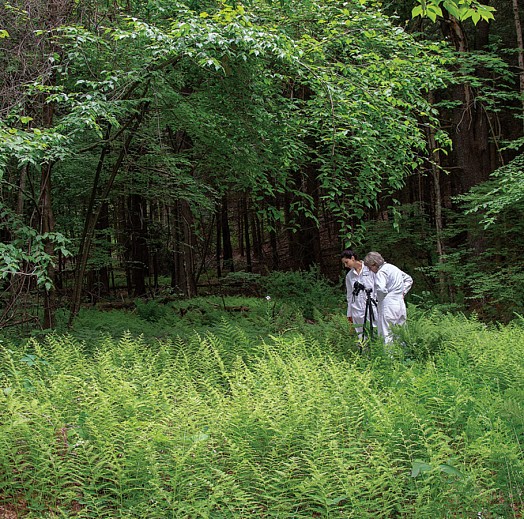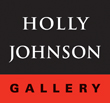
ARTICLE: Dornith Doherty in PaperCity Magazine
July 20, 2018 - Catherine Anspon
The little-known-to-the-public Svalbard Global Seed Vault boasts the world’s greatest repository of seeds. It was unveiled a decade ago — in the northernmost inhabited spot on Earth with an airport — and stores an astounding 850,000 seed varieties culled from 5,000 core agricultural crop species. That’s just 18 percent of the vault’s capacity.
Each variety bears a load of 500 seeds stockpiled per sampling. This precious cargo is meticulously wrapped in aluminum packets bundled into boxes sited deep within the excavated mountainside of a Nordic island.
The entire seed vault, designed to contain and preserve 4.5 million varieties — or some 2.5 billion individual seeds for centuries to come — is a multi-million-dollar hedge against a doomsday occurrence of a manmade or natural kind.
THERE ARE APPROXIMATELY 1,750 SEED REPOSITORIES THROUGHOUT THE WORLD, BUT THIS IS THE GRAND MASTER OF THEM ALL.
Svalbard operates as the largest, most mythic, and least accessible. It’s also the final stop before plant extinction. It functions exclusively as a backup, duplicating the contents of what each individual country’s seed banks are doing.
Founded and primarily funded through the Norwegian Ministry of Agriculture and Food, Svalbard is the hard-drive-recovery mechanism for the world’s plant-based food supply. You won’t find species of zinnias and roses here. What’s stored are the seeds of essential crops that figure throughout human history.
In order of quantities, Svalbard stores wheat, rice, barley, sorghum, beans, corn, millet, chickpeas, kikuyu grass and soybeans. Eggplant, lettuce, potatoes, peanuts, oats, alfalfa and rye also number high on the list. Nearly every country on Earth is participating, and the seed vault does not stockpile any genetically modified plant material.
Voyage to the Arctic Circle
This distant place at the cold end of the planet seems worthy of a pilgrimage. But don’t plan one soon — unless you’re bringing seed deposits approved by the Norwegian government, during one of the three times per year when the vault is cracked open. For the other 360 days, the facility is off limits, and unstaffed — a securely monitored frigid scientific icebox.
All species stored at the Svalbard Global Seed Vault remain unopened and can only be withdrawn by its nation’s or entity’s depositors. Sequestered 100 meters deep within the permafrost, the vault lies at the rim of the Arctic Circle. As its website notes, it is “located in Longyearbyen, on the Spitsbergen Island, which is the largest island in the Svalbard Archipelago. Longyearbyen is considered to be the northernmost town in the world, situated at 78 degrees north [latitude].”
Eight hundred miles from the North Pole, the seed vault maintains an ideal climate for future plant-life preservation. The thermostat is permanently set at minus 0.4 Fahrenheit. But Svalbard is not impervious to climate disaster itself, despite being at an elevation where both polar ice caps could melt and the seed vault would still be above the water line.
When melting of the surrounding permafrost ensued in the spring of 2017, water encroached upon the entrance. This recent development necessitated the Norwegian government spending $13 million to make Svalbard’s vault even safer from future global warming — installing pumps and runoff channels to funnel any rising waters caused by Arctic melts, and revamping its cavernous central tunnel.
The operation is both transparent, featuring a highly detailed website (seedvault.no), and mysterious. Volunteering is not possible, as its ice-encased doors are hermetically sealed 99 percent of the time. The official entities running the seed bank all sound very Big Brother.
Joining the Norwegian Ministry of Agriculture and Food (the governing entity and majority funder) are the Nordic Genetic Resource Centre (NordGen) and Crop Trust (formerly the Global Crop Diversity Trust).
Romancing the Seeds
For the past 10 years, a Texas artist has been documenting select seed banks around the globe, accompanied by X-ray views of some of their precious planetary-vital contents. Dornith Doherty, a 2012 Guggenheim Foundation Fellow, received the prestigious grant for this epic “Archiving Eden” world seed-bank project.
The ambitious and ongoing endeavor has accrued critical interest in both the art and scientific communities. Doherty’s intelligent photographic documentation, which feels particularly urgent after the Svalbard ice melt breach, has even been the subject of a TED Talk.
In 2013, at TEDxMonterey, the artist spoke about the beginning of her investigations into the potent environmental topic.
“Spurred by the impending completion of this Svalbard Global Seed Vault in 2008, I initiated a photographic project called ‘Archiving Eden,’” Doherty said. “I was inspired by the simultaneously pessimistic and optimistic aspects of this vault. On one hand, we have individuals and governments from all over the world who are collaborating together to create the first truly global botanical backup system.
“On the other side, the gravity of climate change and political instability has created a need for an inaccessible vault near the North Pole.”
Environmental Mission
Doherty, who wields a B.A. from Rice and an MFA in photography from Yale, has always made art that reverberates with environmental concerns. Her previous series have explored the imperiled ecosystem at the Rio Grande, with superimposed photo collages of plant life and human habitation at the border, and filmed nighttime videos tracking coyotes near her suburban home.
However, “Archiving Eden” is the body of work freighted with a global imprimatur. Two years after its start, the Distinguished Research Professor at the University of North Texas made it to Svalbard.
She has documented seed banks from London to St. Petersburg and even Austin, some begun nearly a century ago and others, like Svalbard, more recently. “These libraries of life are literally teaming with diverse forms that are fertile and in a state of suspended animation,” she says. “I wanted to talk about the tension between this elusive goal of stopping time in living materials.”
Her experience in the remote outpost of Norway was a physical and psychological journey that amounted to arriving at the Holy Grail.
“BEHIND A FROST-COVERED DOOR IS THE DOOR TO THE ARK,” THE ARTIST SAYS.
In her research, Doherty uncovered countless stories of individual valor in saving seeds, including the seafaring British explorer who came home with botanical material from an expedition; two centuries later, his leather pouch was uncovered in an attic, taken to Great Britain’s Millennium Seed Bank in Kew Gardens, and the tiny seed material planted.
Voilà! A new towering species was discovered. She also relayed the story of seed-bank staff during the siege of Leningrad in World War II who died of starvation rather than breaking into their cache of seeds.
Doherty’s work bridges art and science.
“It’s my hope that these poetic visual artifacts will start a conversation and perhaps spur one person to action,” she says, in reference to the group of scientists at Nordic Gene Bank (now NordGen) who created Norway’s backup seed storage facility in 1984, in an abandoned coal mine outside Longyearbyen. They literally sowed the seeds for today’s Svalbard Global Seed Vault, which opened in the same town a quarter-century later.
For Doherty, the quest continues. She’s just completed a summer residency at the Cary Institute of Ecosystem Studies in Millbrook, New York — a think tank on 2,000 acres in the Hudson Valley that is among the largest ecological programs in the world.
A Seed Artist On the Move
Works from “Archiving Eden” are on view in the museum show “Big Botany: Conversations with the Plant World,” at the Spencer Museum of Art, The University of Kansas in Lawrence (through July 15).
In Europe, Doherty is a headliner at this summer’s international Lodz FotoFestiwal in Poland (through July 1). Come 2019, she will solo at the National Academy of Sciences in Washington, D.C. (January through June 2019).
In September 2019, she opens the fall art season at Moody Gallery, which represents the artist in Houston.
In Dallas, Dornith Doherty is represented by Holly Johnson Gallery, where she opens this September 1, with a solo of her latest work entitled “Deluge” (through November 10, 2018).
Download Article (PDF)Back to News
